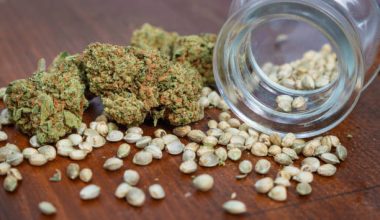Cannabis, commonly known as marijuana, has been a topic of debate and intrigue for centuries. Once vilified and criminalized in many parts of the world, cannabis is now experiencing a resurgence, both as a recreational drug and as a therapeutic tool. From its medicinal properties to its cultural significance, cannabis has captured the attention of governments, health professionals, and consumers alike. In this article, we will explore the various aspects of cannabis, its potential benefits, the ongoing discussions surrounding its legalization, and its role in modern society.
What is Cannabis?
Cannabis is a plant that belongs to the Canabis genus, and it has been used for thousands of years for both medicinal and recreational purposes. The plant contains a variety of chemical compounds, known as cannabinoids, which are responsible for its effects on the human body. The two most well-known cannabinoids are tetrahydrocannabinol (THC) and cannabidiol (CBD).
THC is the psychoactive compound that produces the “high” associated with marijuana use. It binds to the CB1 receptors in the brain, triggering a release of dopamine and other neurotransmitters that lead to euphoria, relaxation, and altered sensory perception.
CBD, on the other hand, is non-psychoactive and has been studied for its potential medicinal properties, including its ability to reduce anxiety, inflammation, and pain, as well as its neuroprotective effects.
In addition to THC and CBD, cannabis contains over 100 other cannabinoids, each with varying effects on the body. The diversity of these compounds gives cannabis its versatility, making it useful for a wide range of medical and recreational purposes.
The Medical Uses of Cannabis
Pain Management
Cannabis has long been used to alleviate pain, and recent studies have helped confirm its effectiveness for a range of conditions. THC, in particular, is known for its analgesic (pain-relieving) properties. It works by interacting with the body’s endocannabinoid system, which plays a key role in regulating pain. Research has shown that cannabis may help individuals with chronic pain, including those suffering from conditions like arthritis, fibromyalgia, and multiple sclerosis (MS).
For example, medical cannabis has been shown to reduce pain in cancer patients undergoing chemotherapy, providing relief from both the pain caused by the disease and the side effects of treatment, such as nausea and vomiting.
Mental Health and Anxiety
CBD has gained attention for its potential to alleviate symptoms of anxiety, depression, and other mental health disorders. Unlike THC, which can sometimes exacerbate anxiety in some individuals, CBD is generally well-tolerated and may have calming, anti-anxiety effects. Studies have suggested that CBD can help reduce social anxiety, generalized anxiety disorder (GAD), and even symptoms of PTSD (Post-Traumatic Stress Disorder).
Furthermore, cannabis has been studied for its potential role in treating depression. Though more research is needed, there is growing evidence to support its use as an adjunct to traditional treatments.
Epilepsy and Seizure Disorders
One of the most compelling applications of cannabis in the medical field has been its use in treating epilepsy. The U.S. Food and Drug Administration (FDA) approved Epidiolex, a CBD-based medication, for the treatment of certain types of epilepsy, such as Dravet syndrome and Lennox-Gastaut syndrome, both of which are difficult to manage with traditional anti-seizure medications.
CBD’s anticonvulsant properties are believed to help stabilize neuronal activity in the brain, reducing the frequency and severity of seizures in affected individuals.
Sleep Disorders
Many people turn to cannabis to help manage sleep disorders, including insomnia and sleep apnea. THC has sedative effects that can help people fall asleep more easily, while CBD may promote a deeper, more restorative sleep cycle by addressing underlying issues like anxiety and pain. A balanced blend of THC and CBD can be an effective treatment for individuals seeking to improve their sleep quality.
The Legalization Movement
Over the past two decades, the legal status of cannabis has been rapidly changing, particularly in North America. Countries like Canada, Uruguay, and several U.S. states have moved toward full or partial legalization of cannabis for medical and recreational use. This shift has been driven by both changing public opinions and growing evidence of the plant’s potential health benefits.
Legalization in the United States
In the United States, cannabis remains illegal at the federal level, classified as a Schedule I substance under the Controlled Substances Act. However, states have been pushing forward with their own legalization efforts. As of 2025, over 20 U.S. states have legalized cannabis for recreational use, while others have approved medical cannabis programs.
This patchwork of state laws has led to challenges, particularly regarding interstate commerce, banking, and taxation. While some argue that cannabis should be fully legalized at the federal level to resolve these issues, others remain cautious due to concerns about the social and economic impacts.
International Legalization
Canada became the first major world economy to legalize cannabis for both medical and recreational use in 2018. This landmark decision has sparked discussions in other countries about the potential economic and health benefits of cannabis legalization. Many European countries have decriminalized cannabis or allowed for medical use, and the debate continues in countries like Germany, Australia, and Mexico.
International cannabis legalization is a complex issue, influenced by political, economic, and cultural factors. However, the global trend is increasingly moving toward more lenient cannabis laws, and it is likely that more countries will follow Canada’s example in the coming years.
The Economic Impact of Cannabis
The cannabis industry is booming, and its economic impact is hard to ignore. In regions where cannabis has been legalized, it has created thousands of jobs and generated billions of dollars in tax revenue. For example, legal cannabis sales in the United States reached $26 billion in 2021, with expectations for continued growth.
The cannabis market includes a wide range of sectors, from cultivation and distribution to edibles, oils, topicals, and even cannabis-infused beverages. As the industry grows, it continues to create new business opportunities, from small-scale artisanal producers to large corporate entities. The legalization of cannabis has also spurred research and innovation, leading to the development of new cannabis-based products and therapies.
The Risks and Side Effects of Cannabis
While cannabis has many potential benefits, it is not without risks. One of the most common side effects of THC is impairment, which can affect memory, coordination, and decision-making. This is why it is important for users to exercise caution when consuming cannabis, especially when driving or operating heavy machinery.
Additionally, some individuals may experience negative psychological effects, such as anxiety, paranoia, or psychosis, particularly when using high-THC strains. Cannabis use can also be addictive for a small percentage of users, leading to dependency or cannabis use disorder (CUD).
It is important for individuals to use cannabis responsibly and consult with a healthcare professional if they have any concerns about its use.
Conclusion
Cannabis is a plant with deep cultural, medicinal, and recreational significance, and its role in modern society is only growing. From providing pain relief to reducing anxiety and helping with sleep disorders, cannabis offers a wide array of potential health benefits. The ongoing push for legalization is a testament to its changing perception and growing acceptance worldwide.
However, as with any substance, it is essential to approach cannabis with an understanding of its potential risks and side effects. With continued research and responsible use, cannabis could continue to play a pivotal role in healthcare, recreation, and the global economy for years to come.
Medical Disclaimer:
The information provided in these blog posts is intended for general informational and educational purposes only. It is not a substitute for professional medical advice, diagnosis, or treatment. Always seek the advice of your physician or other qualified healthcare provider with any questions you may have regarding a medical condition. The use of any information provided in these blog posts is solely at your own risk. The authors and the website do not recommend or endorse any specific products, treatments, or procedures mentioned. Reliance on any information in these blog posts is solely at your own discretion.






